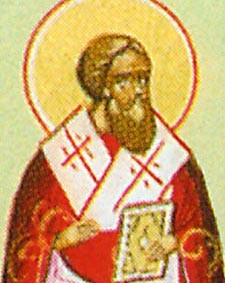Protecting the Church from Falsehood and Heresy
Near the end of the first century and on into the second century, many false writings about Christ were produced. Some of these were the so-called apocryphal writings (not to be confused with the Old Testament Apocrypha), or pseudepigrapha (see volume one on Scripture). These writings, each one usually bearing the name of an Apostle or another prominent New Testament figure in an attempt to give it more authority, introduced into Christian circles many fanciful, legendary stories about the childhood of Christ, the life of the Virgin Mary, and the activities of the Apostles.
Together with the pseudepigrapha, there also appeared the false teachings of Gnosticism, a group of related heresies which sought to transform Christianity into a kind of spiritualistic, dualistic, and intellectualistic philosophy (see Scripture). The first of the great Church Fathers, Saint Irenaeus, Bishop of Lyons (c. 130–c. 200), wrote a monumental work called Against Heresies, which powerfully refuted the various forms of Gnosticism.

In this work, Saint Irenaeus emphasized three crucial ways by which to distinguish heretical groups from true Christian Churches. First, all the true Churches, no matter where they are located, hold the same basic doctrines, known together as the rule of faith. In contrast, the various Gnostic groups disagree among themselves in their beliefs.
Second, all the authentic Churches can trace their origins back to one of the original Apostles, with their bishops coming down in direct descent from that Apostle; this is known as apostolic succession. The Gnostic groups, however, could not claim a similar lineage back to the Apostles.
Third, whereas the various Gnostic groups each had their own writings which they followed, the true Churches only considered the Gospels according to the Evangelists Matthew, Mark, Luke, and John to be divinely inspired. Saint Irenaeus’s strong affirmation of these four Gospels helped to solidify the first crucial step in the very long and tremendously important process by which the organized Church selected the 27 books which would eventually comprise the New Testament Scriptures. In this canonization process the Church had to determine which of the many writings circulating among the various Christian communities were to be accepted as Scripture, and which ones were to be rejected.
The canonization process was not completed until the end of the 4th century. In fact, the earliest list of exactly the 27 New Testament books that we have today was not compiled until in 367 A.D. This list, drawn up by Saint Athanasius the Great, was based on the usage of his Church in Alexandria, Egypt.
Another dangerous threat to the stability and integrity of the Church in the 2nd century arose in about the year 160 in central Asia Minor—the sect known as Montanism. This strict, rigorist, fundamentalistic group arose partly in protest to what was perceived as a growing laxity of spiritual fervor and moral purity among the majority of Christians. Like many such groups throughout Christian history, they were overly apocalyptic, being convinced that Christ would return in their own day. And they also had an over-emphasis on supernatural manifestations such as prophecy, and probably also speaking in tongues.
Montanism was founded by a man named Montanus, who claimed that he and his two prophetesses, Priscilla and Maximilla, were the chosen instruments for the dawning of the End Times and a new, purer, more spiritually advanced Age of the Spirit. However, they prophesied in a strange, frenzied way, contrary to Saint Paul’s injunctions in 1 Cor 14.32–33 and 40. Also, some of their “prophetic” messages contradicted the Gospels and Saint Paul’s epistles—for instance, they forbade fleeing from persecution (violating Christ’s words in Mt 24.16); and they strictly prohibited second marriages (superseding Saint Paul’s words in 1 Cor 7.9 and 1 Tim 5.14). For these reasons, and also because of the movement’s judgmentalism and divisiveness, the Church condemned Montanism in several local councils in Asia Minor by the year 200.
